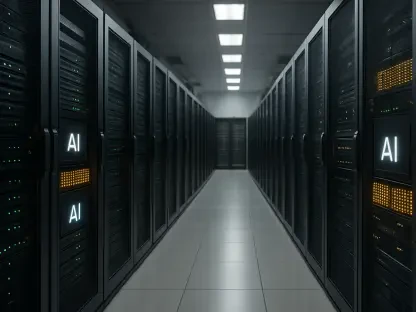I’m thrilled to sit down with Maryanne Baines, a leading authority in cloud technology with extensive experience evaluating cloud providers, their tech stacks, and their applications across various industries. Today, we’re diving into the transformative role of AI in business, focusing on innovations like agentic AI platforms, workforce dynamics, and the broader implications for industries facing global challenges. Our conversation explores how these technologies are reshaping customer support, driving productivity, and addressing labor shortages, while also looking at the balance between AI and human creativity.
Can you walk us through how agentic AI platforms are changing the landscape of customer support in cloud-based companies?
Absolutely. Agentic AI platforms, like those we’ve seen emerging recently, are revolutionizing customer support by automating a significant portion of interactions. These systems can handle millions of conversations with customers, often achieving satisfaction scores comparable to human agents. This allows companies to rebalance their workforce, reducing the need for large support teams while maintaining service quality. It’s not just about cutting headcount; it’s about optimizing resources and letting humans focus on more complex, nuanced issues that require empathy and creativity.
How do you think employees are adapting to working alongside AI agents in these environments?
It’s a mixed bag, honestly. For many, it’s an exciting shift—working with AI can feel like having a super-efficient teammate who handles repetitive tasks, freeing them up for more strategic work. I’ve seen teams adapt by learning to trust the AI’s capabilities under omnichannel supervision, which ensures seamless collaboration. However, there’s also an adjustment period. Some employees initially feel uncertain about their roles or worry about job security, so strong communication and training are critical to help them see AI as a partner, not a threat.
What’s been the most surprising feedback from customers interacting with AI-driven support systems?
One of the most surprising things is how often customers don’t even realize they’re talking to an AI. The feedback often highlights how quick and accurate the responses are, which matches or even exceeds their expectations from human agents. Of course, there are areas for improvement—some customers still crave that personal touch for complex issues, and they’ll mention when the interaction feels a bit mechanical. But overall, the acceptance level has been remarkable, especially as these systems continue to learn and refine their approach.
How do you see AI technologies addressing larger societal issues like labor shortages or demographic shifts?
AI has a huge potential to fill gaps caused by declining birthrates and labor shortages. In industries struggling to recruit talent, agentic AI can take on routine tasks, allowing businesses to operate efficiently with fewer staff. For instance, in customer relationship management, AI can manage massive volumes of leads or inquiries that would otherwise go untouched due to limited human resources. It’s not a complete replacement for people, but it’s a vital supplement that helps sustain operations in a world where finding skilled workers is becoming harder.
Looking at other industries, where do you think similar AI tools could make a significant impact on workforce challenges?
Beyond customer support, industries like healthcare, logistics, and manufacturing could benefit tremendously. In healthcare, AI could handle administrative tasks, freeing up staff to focus on patient care. In logistics, it can optimize routing and inventory management, reducing the need for manual oversight. Manufacturing is already seeing AI-driven automation, but agentic systems could further streamline quality control and supply chain coordination. The key is identifying repetitive, data-heavy tasks where AI can step in, allowing humans to tackle higher-value work.
Shifting to productivity, what kind of gains have you observed when technical teams, like engineers, collaborate with AI agents?
The productivity gains are honestly staggering. Engineers working with AI agents can offload mundane coding tasks, debugging, or even initial design iterations, which speeds up development cycles significantly. I’ve seen reports of teams completing projects in half the time they used to take, simply because AI handles the grunt work. This lets engineers focus on innovation and problem-solving, which is where their real value lies. It’s like giving them a turbo boost without sacrificing quality.
How do you balance the reliance on AI with the need for human ingenuity in technical fields?
That’s the million-dollar question. AI is fantastic for efficiency, but human ingenuity—those flashes of creativity or out-of-the-box thinking—can’t be replicated. The balance comes from using AI as a tool, not a crutch. Companies need to foster a culture where engineers are encouraged to challenge AI outputs, experiment, and bring their unique perspectives to the table. It’s also about ensuring that skill development doesn’t stagnate; humans must keep learning alongside AI to stay ahead of the curve.
Beyond cost savings, how can AI contribute to revenue growth for businesses leveraging cloud technologies?
AI opens up revenue opportunities by enabling businesses to capitalize on untapped potential. For example, in customer relationship management, AI can follow up on millions of leads that would otherwise be ignored due to staffing constraints. By automating outreach and nurturing those connections, companies can convert more prospects into clients. It’s about scaling operations in ways that weren’t possible before—turning missed opportunities into measurable gains, which directly impacts the bottom line.
What’s your forecast for the role of AI in shaping the future of cloud technology and business operations?
I believe AI will become the backbone of cloud technology in the next decade, deeply integrated into every aspect of business operations. We’ll see even smarter agentic systems that anticipate needs, not just react to them, driving efficiency and personalization at unprecedented levels. However, the challenge will be ensuring ethical deployment and maintaining a human-centric approach. My forecast is that businesses who master this balance—using AI to augment rather than replace—will lead the pack, while those who over-rely on it risk losing the trust and creativity that only humans can bring.









